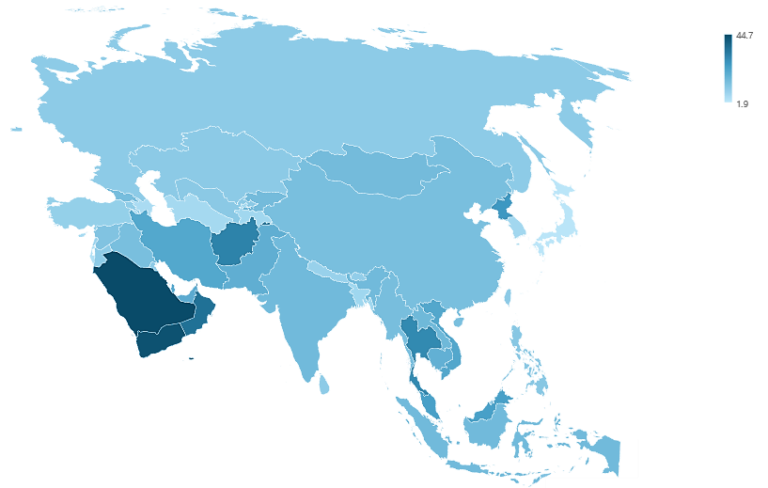Urban and road infrastructure in Asia
 Adam MacRae
Adam MacRae  October 6, 2024
October 6, 2024  Adam MacRae
Adam MacRae  October 6, 2024
October 6, 2024 The global shift from the countryside to cities has been one of the most significant trends in human history in the past 100 years. Every year, roughly 77 million people move from the countryside to cities in search of better economic opportunities. As a result, cities, especially in emerging economies, are growing at a rapid pace and bulging at the seams. The consequences are manyfold, including inadequate housing, strains on public services, utilities unable to keep up, and dangerous roads and traffic.
In this newsletter we will specifically focus on the last part – we will start by describing the problem of dangerous roads in relation to urbanisation and offer some solutions going forward.
According to the most recent estimates in 2021, over 1.3 million people lost their lives to road injuries, with a further 50 million suffering severe injuries. Road traffic accidents disproportionately impact young people, making it the leading cause of death for those aged 15-29.
The cost is borne not only by the families losing their loved ones; the economic damages are immense. Due to a combination of fatalities, permanent disabilities, or minor injuries, traffic injuries cost the average country 3-5% in lost output.

In particular, Asia has made significant progress, reducing its rate by over 50% since 1980, saving millions of lives. However, performance within Asia varies. Saudi Arabia has the highest rate at 44.7, while Singapore is among the safest places in the world with just 1.9 deaths per 100,000.

Figure 1: Road Traffic Deaths per 100,000 people in Asia.
Absolute

The numbers are clear: even small changes to how cities operate and investing in safer roads in Asia would lead to millions of lives saved. This crisis underscores the glaring need for robust road safety measures across the region, where infrastructure often lags behind the surge in motor vehicle usage.
Rapid urbanization in Asia adds to the challenge. By 2030, 70% of the global population is expected to live in cities, driving up demand for public transportation. Without proper planning and investment, this growth could worsen Asia’s already congested and dangerous roads.
Countries like India, Indonesia, and Bangladesh are particularly affected by a mix of rapid motorization, weak road safety rules, poor enforcement, and inadequate emergency services.
Without urgent action, the human and financial toll of road accidents in Asia will keep rising, potentially wiping out the gains made in the last 40 years.
Countries across Asia can look to successful models of road safety from both within and beyond the region. For instance, Japan and Singapore have significantly lowered fatality rates due to stringent road safety regulations, enforcement, and well-designed infrastructure (2.2 and 1.9 respectively). On a global level, Sweden’s Vision Zero strategy offers a compelling blueprint for success, prioritizing human safety over speed and convenience.
Research consistently shows that lowering speed limits in urban areas can save lives without significantly impacting travel times. On roads with high pedestrian activity, setting speed limits at 30 km/h has proven to be a life-saving measure.
All told, it will not come cheap to make this a reality. According to the Asian Development Bank, it will cost the continent $1.7 trillion per year just to maintain current levels of GDP growth along with addressing climate change and eradicating poverty.
As high as the price tag may seem, the demand will be even greater. As of 2024, there are 28 megacities with over 10 million people. By 2050, over 50% of the world’s estimated 65 megacities will be in Asia.
The investments flowing in now will cover various sectors including transportation, energy telecommunications, water infrastructure, as well as real estate.
Now is the time to focus on investing in Asia and building its future.
Investing in safer roads and better infrastructure is not just a moral imperative; it’s also a smart economic decision. The benefits extend beyond saving lives to creating business opportunities and fostering economic growth. By prioritizing road safety and urban development now, we can build a future where our cities are not only thriving hubs of activity but also safe havens for all their inhabitants.
If you would like to learn more about Holocene’s work and capabilities in the infrastructure and energy space in emerging markets, get in touch at info@holoceneic.com